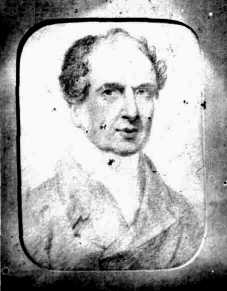George Wilkinson (music publisher) facts for kids
George Wilkinson (born 5 November 1783 – died 1855) was an English music publisher. He also made pianos and candles. He was known for his work in these different businesses during his lifetime.
Contents
Early Life and Music Business
George Wilkinson was the youngest son of Charles Wilkinson. In 1797, when he was about 14, he began learning the music business. He worked with Francis Broderip, a music seller and publisher in London. Broderip had previously been part of a piano-making company that had faced financial trouble.
In 1805, George took over his older brother Charles's share in the company. The business then became known as Broderip & Wilkinson. After Broderip passed away in 1807, George bought his partner's shares. He then started his own company, Wilkinson & Co., located at 3 Great Windmill Street.
Making Pianos
By 1808, Wilkinson & Co. started making upright pianos called cabinet pianos. These pianos were made using a special design by William Southwell. The design helped the piano strings stay in tune better because they had strong frames.
Wilkinson & Co. was very confident in their pianos. They offered a one-year guarantee that their pianos would be well-made and stay in tune. If a piano didn't "stand well" (meaning it didn't stay in tune or work properly), they would provide a new one.
Partnership with Robert Wornum
In 1810, George Wilkinson sold his music publishing business. He then borrowed money from his father to start a new partnership with Robert Wornum. Wornum was a skilled craftsman who had invented new ways to make small upright pianos. His ideas included special ways of stringing the piano and making the parts more compact.
Wilkinson and Wornum opened a factory and showrooms near Hanover Square. Their main location was at 315 Oxford Street, with another shop at 11 Princes Street. They also had a large area for wood storage between the two buildings.
Challenges and New Beginnings
In 1812, their warehouse, factory, and stables were destroyed by a fire. This fire left many workers without jobs and caused a lot of debt, with little help from insurance. In 1813, the partnership ended. Wilkinson's father took over the company's debts and helped their other creditors.
After this, Wornum started his own factory and introduced a new type of upright piano. This piano was called the harmonic pianoforte but became better known as the cottage piano.
Later Piano and Candle Businesses
In late 1813, Wilkinson rented a house at 32 Howland Street. By 1816, he had set up a piano factory behind this house. He also had showrooms at 315 Oxford Street and New Bond Street. This piano business continued until at least 1830. During this time, he made both cabinet upright pianos and grand pianos.
Candle Manufacturing
Later, Wilkinson partnered with Ferdinand Hirschfeld. They started a special business making candles. These candles were designed to burn without sputtering and had metal wicks that didn't need trimming. However, these special candles were not very successful in the market.
Hirschfeld and Wilkinson, who were wax and oil refiners, faced financial difficulties. They were listed as having financial problems on 31 July 1835.
Final Years
In 1854, George Wilkinson left London and moved to Milford Haven. He was trying to avoid an outbreak of a serious illness called cholera. He passed away in Milford Haven in 1855. He is buried in Steynton Churchyard.
Family Life
George Wilkinson married Elizabeth Cecilia Mary Broadhurst on 23 September 1809. They had several children: Ann (1814-1814), Emma (1815–1889), Matilda (1817–1876), Oriana (1818–1853), Louisa (born 1820), Alfred Broadhurst Wilkinson (1822–1854), and Henry Broadhurst Wilkinson (born 1824).


